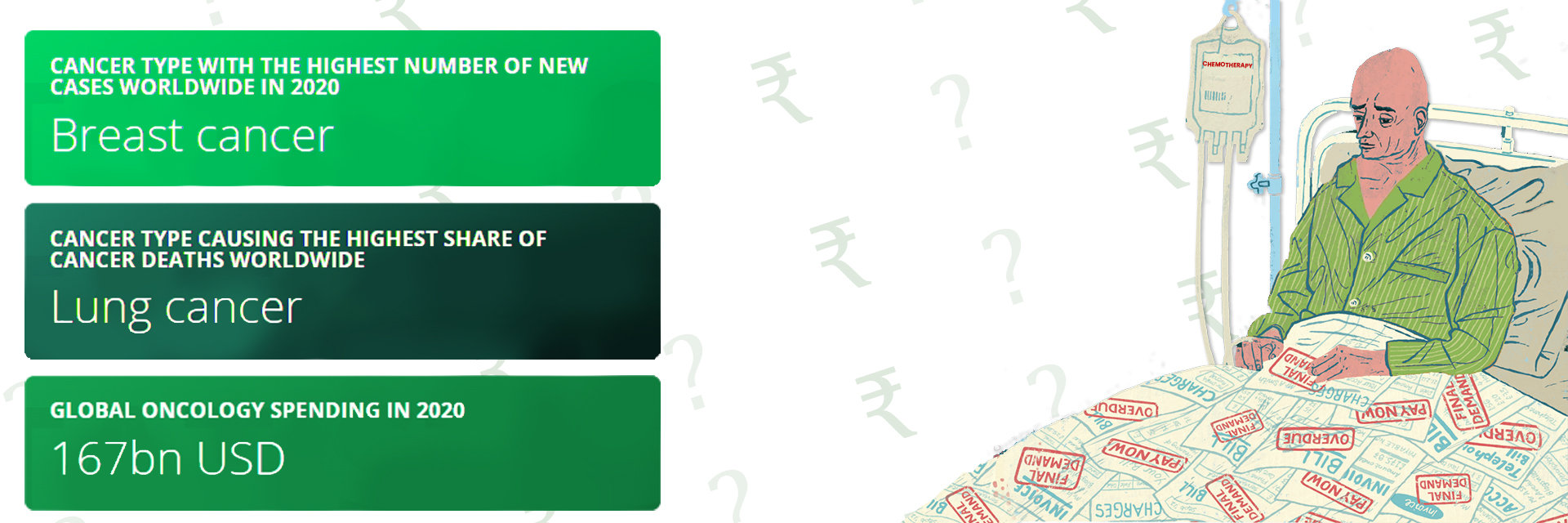Esophageal cancer is a form of common gastrointestinal malignancy that originates in the esophagus. There are two most common types of esophageal cancer:
- Adenocarcinoma
- Squamous cell carcinoma
Adenocarcinoma occurs closer to the stomach. On the other hand, squamous cell carcinoma occurs mainly in the upper part of the esophagus.
Esophageal cancer is the 8th most commonly diagnosed form of cancer worldwide. As per reports, it is the 13th most common cancer among women and the 7th most common type of cancer in men. 2020 reported more than 6 lakh cases of esophageal cancer around the world. According to WHO, GLOBOCAN 2018, it is the 6th most common cancer in India, with an incidence rate of 5.04%. In India, it is the 6th common cancer in females and 5th in males.
However, the advancement of medical science has opened new avenues of treatment for esophageal cancer. In the past few years, we saw several techniques and drugs for esophageal cancer cures getting FDA approval. 2022 is no different. Revolutionary immunotherapy for esophageal cancer has created a buzz in oncology. Nivolumab, sold under the brand name Opdivo, Bristol-Myers Squibb Company, got FDA approval on May 27, 2022, as a first-line treatment.
Read on to learn more about this new treatment for esophageal cancer
FDA Approves Nivolumab/Chemo and Nivolumab/Ipilimumab
FDA approved nivolumab (Opdivo, Bristol-Myers Squibb Company) plus chemotherapy and nivolumab plus ipilimumab (Yervoy, Bristol-Myers Squibb Company) as a treatment for patients with advanced or metastatic esophageal cancer. These new cancer cure therapies are especially beneficial for those who cannot undergo esophageal cancer surgery.
The approval by the FDA was based on the phase 3 CheckMate 648 trial (NCT03143153). In the trial, researchers used nivolumab in combination with ipilimumab or chemotherapy for esophageal cancer. The results showed that patients given nivolumab had better overall survival (OS) than those who only received chemotherapy.
To give you more clarity, we have mentioned how the study of this new esophageal cancer treatment worked.
More detail about CheckMate 648
Researchers performed CheckMate 648 with 970 randomized patients. All the patients had advanced or metastatic squamous cell carcinoma untreatable through esophagus surgery. There were three categories in the trial.
- The first was administered a combination of nivolumab and chemotherapy.
- The second group in the trial underwent immunotherapy only and took a combination of nivolumab-ipilimumab.
Researchers presented their analysis at the 2021 American Society of Clinical Oncology (ASCO) Annual Meeting. The trial results showed that the nivolumab-chemotherapy combination conferred longer overall survival (OS) vs. chemotherapy alone among all patients.
Key Findings of the New Treatment & Possible Benefits
- It is the world's first treatment regimen without chemotherapy to benefit patients with previously untreated esophageal cancer. Even the combination of nivolumab and ipilimumab significantly prolonged OS against those who took only chemotherapy.
- The trial results also showed positive effects in patients with tumor cell PD-L1 expression of 1% or greater. PD-1 is a protein in T cells and plays a significant role in our bodies immune system. When PD-1 binds to another protein called PD-L1, it decreases the ability of T cells to kill cancer cells. Immunotherapy is beneficial in cases where cancer cells have a high amount of PDL1.
- In the trial CheckMate 648, 48% of the patients in the chemotherapy group and 49% in the combination therapy groups had PD-L1 positive tumors. A follow-up of 13 months showed overall survival was better amongst patients in both combination groups whose tumors were PD-L1 positive. The combination groups also had a percentage of patients whose tumors shrank.
| Treatment Group | All Participants | Participants with PD-L1+ tumours |
| Nivolumab + Chemotherapy | 13.2 months | 15.4 months |
| Nivolumab + Ipilimumab | 12.8 months | 13.7 months |
| Chemotherapy alone | 10.7 months | 9.1 months |
These new therapies can potentially improve the outlook for patients and families affected by esophageal cancer. Such innovation brings us closer to effective, lasting cures for esophageal cancer.
References:
https://www.cancerresearch.org/






